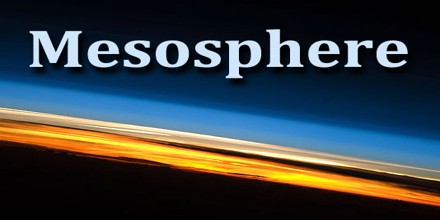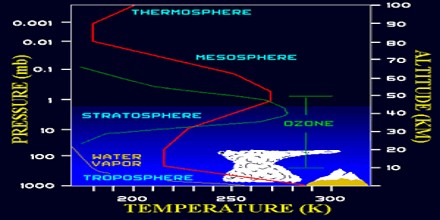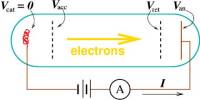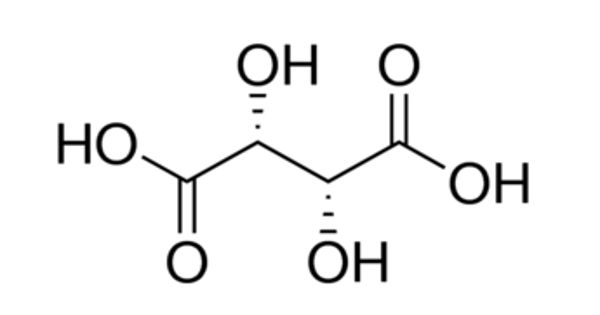Mesosphere
Definition
Mesosphere is the region of the Earth’s atmosphere lying above the stratosphere and below the thermosphere, from a height of about 50 km (31 mi) to about 80 km (50 mi) above the Earth’s surface. In the mesosphere temperatures decrease with increasing altitude due to the decreasing absorption of ultraviolet radiation from the Sun. At the top of this region temperatures are around -95°C (-135.4°F). Most of the meteors that enter Earth’s atmosphere burn up while passing through the mesosphere.

The stratosphere, mesosphere and lowest part of the thermosphere are collectively referred to as the “middle atmosphere”, which spans heights from approximately 10 kilometres (33,000 ft; 6.2 mi) to 100 kilometres (62 mi; 330,000 ft). The mesopause, at an altitude of 80–90 km (50–56 mi), separates the mesosphere from the thermosphere—the second-outermost layer of the Earth’s atmosphere.
The mesosphere begins around 31 miles above the earth’s surface and extends about 53 miles, where the thermosphere begins. The atmosphere transitions from the stratosphere to the mesosphere at a boundary named the stratopause. The boundary between the mesosphere and the thermosphere is called the mesopause.
Mesosphere Layer
The mesosphere is difficult to study, so less is known about this layer of the atmosphere than other layers. Weather balloons and other aircraft cannot fly high enough to reach the mesosphere. Satellites orbit above the mesosphere and cannot directly measure traits of this layer. Scientists use instruments on sounding rockets to sample the mesosphere directly, but such flights are brief and infrequent. Since it is difficult to take measurements of the mesosphere directly using instruments, much about the mesosphere is still mysterious.

It is directly above the stratosphere and below the thermosphere. It extends from about 50 to 85 km (31 to 53 miles) above our planet. Temperature decreases with height throughout the mesosphere. The coldest temperatures in Earth’s atmosphere, about -90° C (-130° F), are found near the top of this layer.
The mesosphere layer protects the planet Earth from the celestial rocky masses that enters the atmospheric envelope of the Earth, where they burn as a result of their friction with the air molecules, and forming luminous meteors.
Although the meteors are burnt in the mesosphere layer, the spaceships can not burnt during their passing in it as their conical fronts disperse the heat and their tails are made of an insulated material.

Mesosphere Facts
The word ‘mesosphere’ is derived from the Greek words ‘mesos sphaira’ that literally translate to ‘middle sphere’. The mesosphere is too high for weather balloons or airplanes and too low for satellites, making it difficult to study, however scientists are able to use research rockets capable of short trips for specific experiments. Some Interesting Mesosphere Facts are:
- Due to high atmospheric drag in the mesosphere it is not possible for research equipment such as satellites to stay in orbit.
- The mesosphere is very important for earth’s protection. The mesosphere burns up most meteors and asteroids before they are able to reach the earth’s surface.
- As meteors burn up they can sometimes be seen in the night’s sky. Most people call them shooting stars.
- The mesosphere’s atmosphere is low density and made up of oxygen, carbon dioxide, and nitrogen.
- Although most of the meteors that reach the mesosphere are burned up, some of their material hangs around afterwards, including iron and other metallic atoms.
- The mesosphere is the coldest atmospheric layer surrounding the earth.
- The mesosphere experiences atmospheric gravity waves, atmospheric tides, planetary waves, and strong winds that flow from north to south and east to west called zonal winds.
- The research rockets used to study the mesosphere are also called sounding rockets. These rockets are often made with surplus military rocket motors.
- A strange type of lightning occurs in the mesosphere. This lightning is referred to as ‘sprites’ or ‘elves’.
- Together the layers of the atmosphere help to protect the earth from greenhouse gases, working like a blanket of insulation surrounding the planet.
- The atmosphere around the earth, including the mesosphere, helps to keep the earth’s climate and weather patterns as regular as possible.
The main dynamic features in this region are strong zonal (East-West) winds, atmospheric tides, internal atmospheric gravity waves, and planetary waves. Most of these tides and waves start in the troposphere and lower stratosphere, and propagate to the mesosphere. In the mesosphere, gravity-wave amplitudes can become so large that the waves become unstable and dissipate. This dissipation deposits momentum into the mesosphere and largely drives global circulation.
















